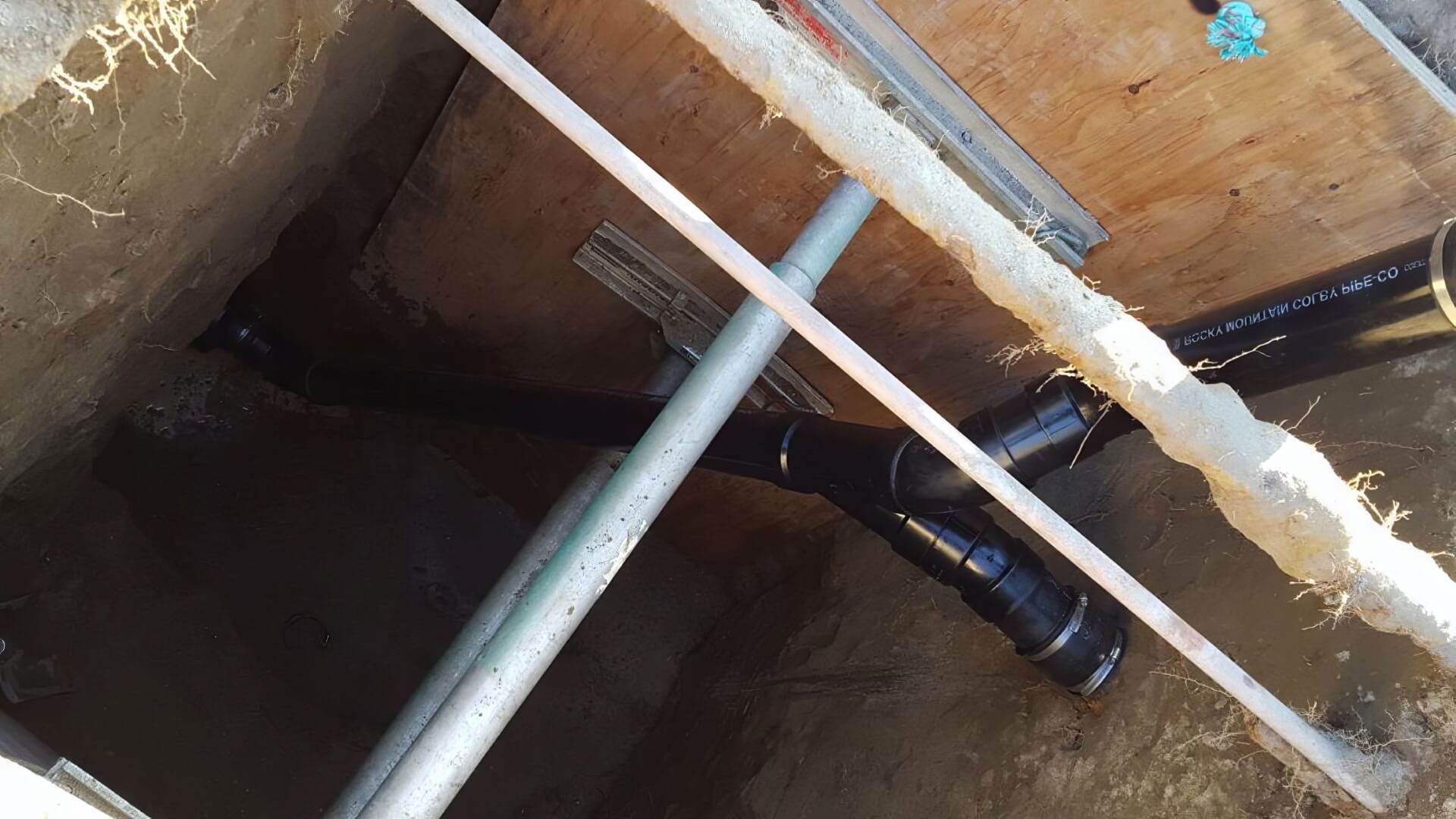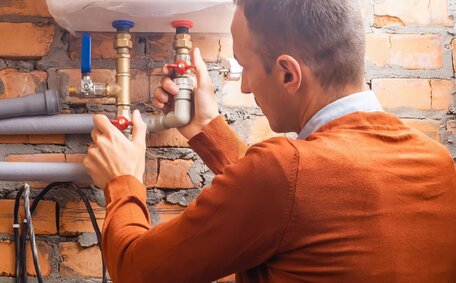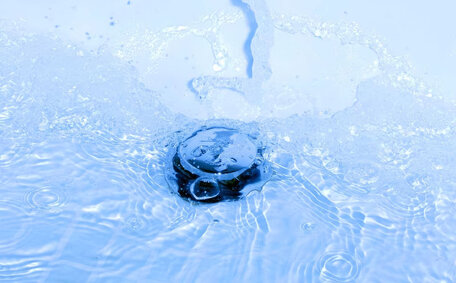What is Sewer Pipe Relining?
Drain pipe relining, also known as Cured-in-Place Pipe (CIPP), is a trenchless method of repairing damaged sewer pipes without the need for extensive excavation. A resin-coated felt liner is inserted into the existing pipe, then expanded and cured in place, creating a robust new pipe within the old one.
This creates a seamless, jointless and corrosion-resistant replacement pipe inside the old one.
Suitable for various pipe materials and sizes, pipe relining avoids excavation, instead using small access points, thus causing minimal disruption. This process is significantly more rapid than pipe replacement, more economical and avoids the inconvenience of excavating your garden or driveway.
Pipe relining effectively addresses issues such as blocked drains, collapsed pipes, root intrusions, and cracks, providing a robust solution for common sewer line damages. With drain relining showing a typical service life of over 50 years, this repair or replacement ensures that homeowners in New South Wales can anticipate a relined pipe often outperforming the life expectancy of the original.
How Does the Relining Process Work?
The relining process starts with a camera inspection to identify and assess the damaged areas.
Advanced technology and pressure systems ensure the epoxy resin liner is accurately inflated, adhering firmly to the old pipe walls, and hardening to create a smooth, seamless new lining.
The end result is a durable, corrosion-resistant replacement pipe that closely contours the inner walls of the damaged one.
The relining procedure eliminates leaks and potential root penetration points, fully restoring pipe function and durability for over 50 years. And because no digging or pipe replacement is involved, pipe relining is a more cost-effective, convenient and minimally invasive solution for a variety of plumbing problems.
When to Choose Relining Over Replacement
There are numerous situations where the pipe relining method proves to be a superior pipe repair choice over full replacement:
- Pipes running underneath structures like concrete paths, your garden beds, or driveways, which might affect another pipe system. Relining circumvents the extensive demolition work otherwise required to dig up these areas.
- Maintaining operations and helping to keep your household or business running smoothly with minimal interruption. The trenchless method is less disruptive than traditional pipe replacement techniques.
- Location within environmentally sensitive areas where excavation could disturb the local habitat or tree roots.
- Unsuitable soil conditions or buried utilities make digging hazardous or impractical.
- Strict council regulations prohibiting extensive digging on the property.
- Heritage-listed homes where preserving structural integrity is paramount.
- Older pipe networks where multiple weak points suggest potential future failures if left unrepaired.
Common signs your home’s pipes may require relining include leaking, corroded, or root-infiltrated terra cotta pipes. Severe wet weather events can get revealing for drainage networks no longer able to cope. In many local homes over 50 years old, relining provides long-term durability without the mess and disruption of replacing entire pipe systems.
Pros of Relining
Pipe relining offers key advantages over complete pipe replacement:
- Less invasive - Bypasses the need for trench digging and concrete jackhammering, preserving your yard and causing minimal disruption.
- More sustainable - Relining reuses existing pipes so there’s no waste. And no trucks removing heavy debris from the site.
- Quicker repairs - Curing the resin liner takes just a few hours compared to days for typical pipe replacements.
- Long lifespan - Quality liners prevent future root damage and leakage, extending the pipe’s life by 20-50 years.
- Cost-effective - Relining typically incurs half the cost of new pipe excavation and installation.
- Versatile - Effective for almost any pipe material and suitable to repair isolated damage or whole systems.
Opting for relining instead of replacement shields your drains from a drawn-out, expensive and disruptive process. Pipe relining restores structural integrity, flow capacity, and long-term durability without destroying the surrounding environment in the process.
Cons of Relining
Despite its advantages, it’s prudent to consider certain limitations associated with pipe relining:
- Higher initial cost - Relining may appear costly when compared with basic drain cleaning.
- Existing damage may be too severe - Where pipes are broken, collapsed, blocked or otherwise irreparable, full replacement may be the requisite course of action.
- Restricted by pipe size and type - Generally only effective on pipes up to 12” diameter and limited for some materials.
- Regular maintenance needed - Despite relining’s durability, consistent inspections and cleanings help maintain the pipe’s longevity.
- Skill and experience vary, with technologies like robotic cutters enhancing precision; however, poor resin curing or liner installation can affect quality and longevity.
An experienced plumber should inspect your pipes and advise on whether relining is suitable to repair your specific issues, ensuring the task is done right. They can also oversee the sewer repair process to ensure the job done meets the highest standards of quality and efficiency. In instances of extensive deterioration, full pipe replacement may be the most viable solution.
Cost Comparison: Relining vs Replacement
When comparing pipe relining vs replacement, cost emerges as a major consideration for homeowners. Relining is commonly viewed as the economical choice, with costs frequently 30-50% lower than full replacement projects.
The exact cost difference depends on several variables. These include:
- Pipe length and diameter
- Accessibility and location
- The materials used in the pipe and the extent of damage
- Whether auxiliary components like manholes need replacement
As a general guide, relining a standard 6 metre section of 100-150mm diameter sewer pipe might cost $2,000-3,000. Replacing the same section could be $5,000-8,000 or more when considering excavation, new materials, comprehensive clean up and labour. Larger commercial projects attract even greater cost discrepancies.
While opting to reline pipes represents substantial upfront savings, households and businesses also avoid ongoing costs from potential structural failures if left unrepaired. Relined pipes don’t leak or allow root infiltration for decades, saving thousands in emergency repairs down the track.
An accurate comparison of quotes for both solutions while assessing long-term benefits is recommended. This allows for an informed decision catered to your property’s unique drainage issues.
What Can Be Relined
Pipe relining can effectively repair an array of materials, such as:
- PVC (Polyvinyl chloride)
- PE (Polyethylene)
- PP (Polypropylene)
- Concrete
- Cast iron
- Steel
- Copper
- Asbestos cement
It effectively repairs pipes ranging from 50mm to 1200mm in diameter, although larger pipes need specialist equipment and expertise.
Almost any kind of pipe damage can be fixed with relining including cracks, breaks, blockages, misalignments, root intrusion and general wear and tear. It represents a proven option for both minor isolated issues and extensive refurbishments of your water drainage system.
Stormwater drainage pipes can also be relined. And since the procedure rejuvenates pipes from the inside out, it suits any pipe location, whether under buildings, beneath gardens, or running under driveways and paths.
An initial camera inspection by a professional plumber determines accurate pipe dimensions, material, condition and location to ensure suitability for relining over replacement.
Spot Repairs vs Full Relining
Spot repairs involve relining only the sections of pipe that are damaged, whereas full pipe relining covers entire systems. Determining which solution to use depends on:
- Extent of damage - Isolated issues may only need spot repairs but widespread deterioration requires full relining.
- Pipe location and accessibility - Spot repairs useful where pipes run under structures that are difficult and costly to demolish.
- Future failure prevention - Full relining provides an all-round protective barrier against further damage.
- Assessing the cost-to-benefit ratio - Spot repairs provide immediate savings but repeated repairs become expensive.
A professional inspection using a drain camera reveals the exact location and severity of any pipe damage, ensuring we make sure every detail is assessed. From this, plumbers can advise whether spot repairs or whole pipe relining are most suitable.
For minor isolated issues, spot repairs restore structural integrity and flow capacity at a lower upfront cost. But full relining gives superior root intrusion prevention and long-term durability across entire pipe networks.
Longevity of Relined Pipes
Relined pipes can last as long, if not longer, than brand new pipe installations. Quality pipe relining uses durable epoxy resins that cure to form a robust, jointless barrier inside damaged pipes. This restores structural integrity, flow capacity and prevents future root damage.
Correctly installed pipe liners are designed to outlast the pipe itself. With a typical lifespan of 50+ years, relined pipes often exceed the life expectancy of original pipes which may fail again in 10-20 years if not relined.
The longevity of a relined pipe depends on proper installation by experienced technicians. Quality training and workmanship ensures impregnated liners seal tightly against old pipe walls during curing. This prevents destabilisation, detachment or resin leaching over time.
Ongoing maintenance like regular drain inspections and cleaning removes debris, allowing unobstructed flow. But the relined pipe itself remains a long-term solution, with failures extremely rare compared to replacements.
In properties with older pipe networks, one-off repairs may temporarily patch damage but full systematic relining provides an all-round barrier. With pipes restored to as-new condition and an impressive lifespan of over 50 years, relining pre-emptively addresses issues before they necessitate costly future pipe replacement.
Signs Your Sewer Needs Relining
There are several telltale signs that your sewer line needs relining:
- Frequent clogs or slow drains - This indicates buildup inside your sewer lines that relining could remediate.
- Gurgling sink/tub drains - Suggests sewer venting issues where broken pipes allow sewer gas to enter.
- Strong sewage smells indoors or outdoors - Damaged pipes may be leaking waste.
- Water pooling around cleanouts or drains - Potential pipe fractures underground.
- Visible root intrusions in sewer vents - Trees and shrubs intruding due to cracks.
- Recurring sewer backups during heavy rain - Old, potentially damaged drains may be misaligned or have reduced flow capacity.
- Multiple pipe repairs in a short period - The system needs an overhaul to prevent future damage.
A drain camera inspection by professionals locates damage visually. They may also conduct leak tests and assess venting issues. Where ageing sewer pipes show chronic deterioration and root ingress, full sewer relining could be the most viable long-term solution.
Working With a Professional Plumber
When opting for trenchless sewer repairs like pipe relining, It’s essential to engage a qualified professional plumber to address your drain pipe concerns. We offer over 10 years of expertise at Ryde Plumbing in enhancing your plumbing system with our exceptional relining services across Ryde and wider Sydney. Our team stays at the forefront of the latest trenchless technologies to provide long-lasting solutions.
We also handle all drain repair permitting and council requirements, ensuring compliance while addressing your plumbing needs.
By choosing Ryde Plumbing, Our certified and insured plumbers ensure your project is completed safely and cleanly, with minimal inconvenience.
We provide no-obligation quotes and thorough assessments to establish if relining meets your property’s requirements.
For more details on our pipe relining services or to book an inspection, please email us or call 1300 349 338. We’re happy to explore suitable options for repairing your damaged drain or considering a replacement.






